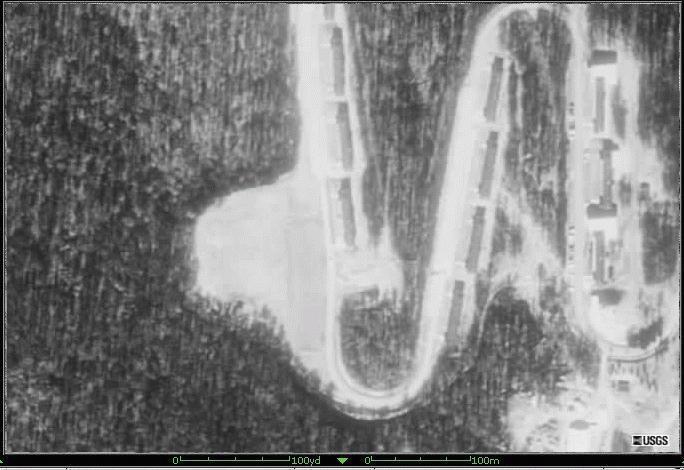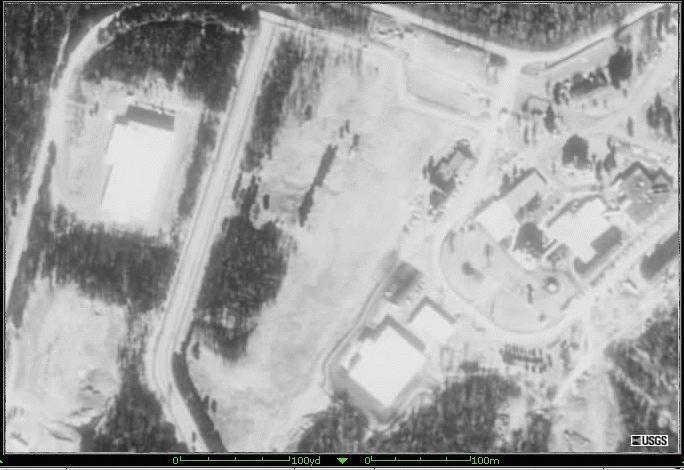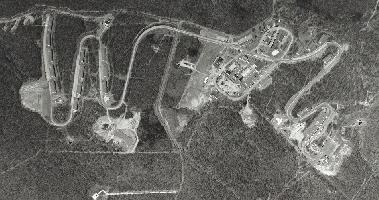 Mt. Weather overview image 114k |
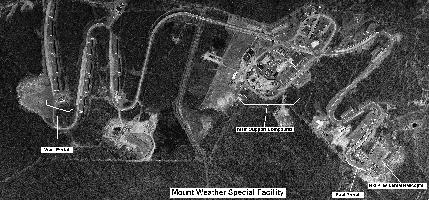 Mt. Weather overview image 451k |




Berryville, VA
703-542-2287
The Mount Weather Special Facility is an unacknowledged Continuity of Government (COG) facility operated by the Federal Emergency Management Agency (FEMA). The 200,000 square foot facility also houses FEMA's National Emergency Coordinating Center. Located on a 434 acre mountain site on the borders of Loudon and Clarke counties, the above ground support facilities, with 240 employees, include about a dozen building providing communications links to the White House Situation Room.
The site was originally acquired by the National Weather Bureau to launch weather balloons and kites. In 1936 it passed to the Bureau of Mines, which bored a short experimental tunnel less than 300 feet beneath the mountain's crest to test new mining techniques. Based on a favorable evaluation of the hardness and integrity of the mountains rock, the Bureau began construction of the facility's tunnels in 1954, which were completed by the Army Corps of Engineers under the code name "Operation High Point." Total constuction costs, adjusted for inflation, are estimated to have exceeded $1 billion. Tunnel roofs are shored up with some 21,000 iron bolts driven 8 to 10 feet into the overhead rock. The entrance is protected by a guillotine gate, and a 10 foot tall by 20 foot wide 34-ton blast door that is 5 feet thick and reportedly takes 10 to 15 minutes to open or close.
Completed in 1958, the underground bunker includes a hospital, crematorium, dining and recreation areas, sleeping quarters, reservoirs of drinking and cooling water, an emergency power plant, and a radio and television studio which is part of the Emergency Braodcasting System. A series of side-tunnels accomodate a total of 20 office buildings, some of which are three stories tall. The East Tunnel includes a computer complex for directing emergency simulations and operations through the Contingency Impact Analysis System (CIAS) and the Resource Interruption Monitoring System (RIMS).
An on-site 90,000 gallon/day sewage treatment plant and two 250,000 gallon above-ground storage tanks are intended to support a population of 200 for up to 30 days. Although the facility is designed to accomodate several thousand people (with sleeping cots for 2,000), only the President, the Cabinet, and Supreme Court are provided private sleeping quarters. For Continuity of Government purposes, senior officials are divided into Alpha, Bravo and Charlie teams -- one remains in Washington, another relocates to Mount Weather, and the third disperses to other relocation sites. The only full-scale activation of the facility came on 9 November 1965, at the time of the great Northeastern power blackout.
The Mount Weather Emergency Assistance Center has transitioned from a single mission to one that supports the all-hazards mission of FEMA and, simultaneously, it became a self-supporting cost center that derives its income from the Working Capital Fund authorized by Congress. The Fiscal Year 1997 Appropriation Act authorized FEMA to establish a working capital fund for providing administrative services. A fund was established to support the centralized services provided by the Mount Weather Emergency Assistance Center (MWEAC). The facility, over a two year period in 1997 and 1998, transitioned to a fully operational mode for the Working Capital Fund. It provides office, conference, training, and billeting accommodations at Mount Weather for use by FEMA organizations and other Federal agencies. While operations are being funded based on current appropriations, collections, and usage, FEMA is aggressively marketing the facility to attract new users. All organizations at Mount Weather, including FEMA components, were subject to the provisions of the Working Capital Fund beginning in FY 1998.
Since the 1993 restructuring, population explosion occurred at Mount Weather, moving from a daily work force of about 400 employees, to one of more than 900. Approximately 250 new Cadre of Oncall Response and Recovery Employee (CORE) positions were added that did not exist in 1993. Conference and Training Center (CTC) activity also expanded dramatically, from fewer than 6,000 students/attendees in 1993, to more than 18,000 in FY 1996. More than 100,000 persons were guests at Mount Weather during 1996. The Conference and Training Center at Mount Weather handles some 10,000 students per year for one-week courses, a number comparable to the approximately 10,000 students trained each year in residence at the National Emergency Training Center in Emittsburg, Maryland.
Mount Weather is currently home to six major disaster operations facilities including the:
Today, even in small emergencies like flooding, a lot of the coordination is going through Mount Weather. Ever since the Cold War ended, they have been ordering service for the whole country on the smaller disasters. A snow storm on January 13, 1997 closed the NTC in Denton, TX. The Mount Weather Emergency Assistance Center took 100 percent of the calls that day. The West Side Teleregistration Service Representative personnel of Buildings 704 and 712 took a total of 2,254 calls with an average wait time of only 12 seconds.
Mt. Weather
USGS Aerial Images
April 1965
 Mt. Weather overview image 114k |
 Mt. Weather overview image 451k |
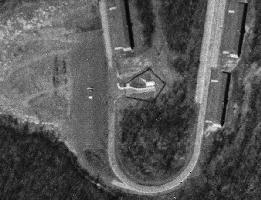 West Portal |
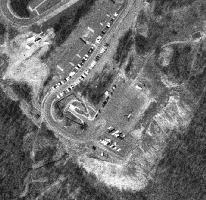 East Portal |

